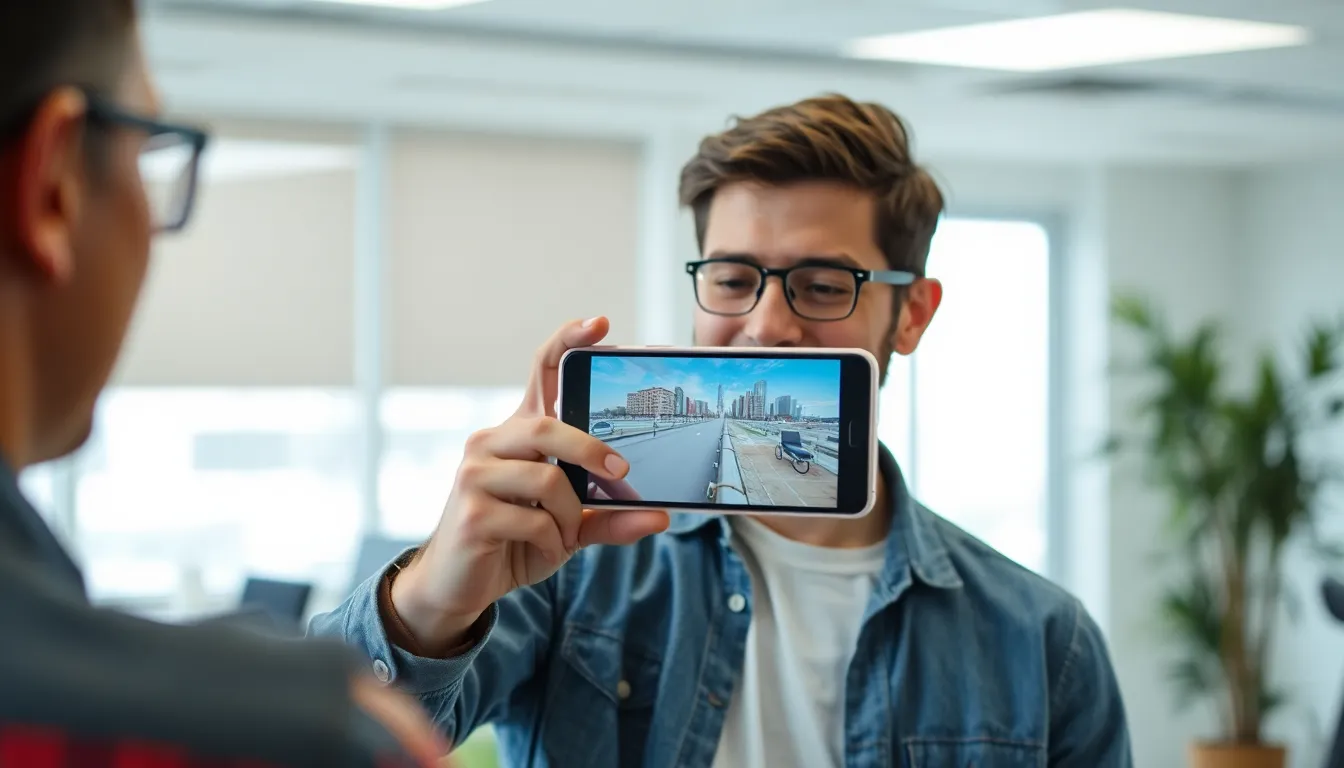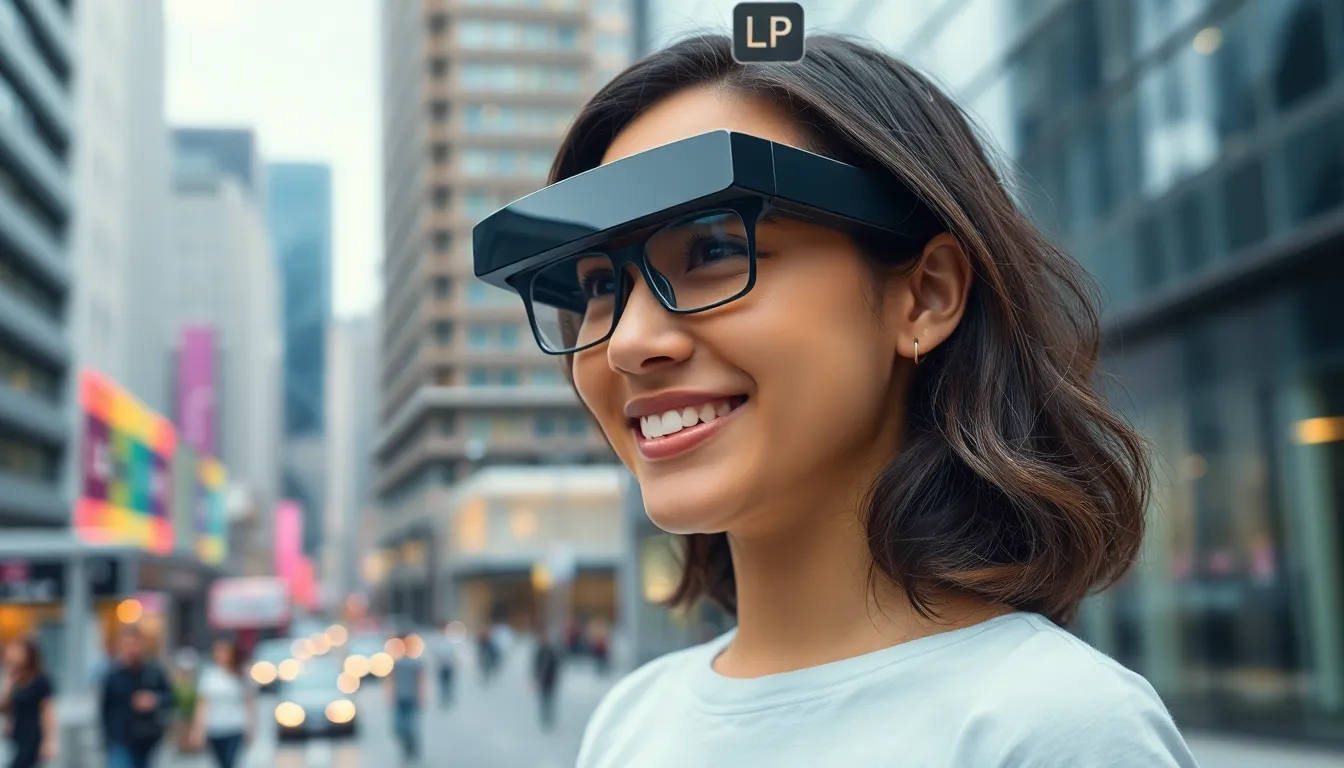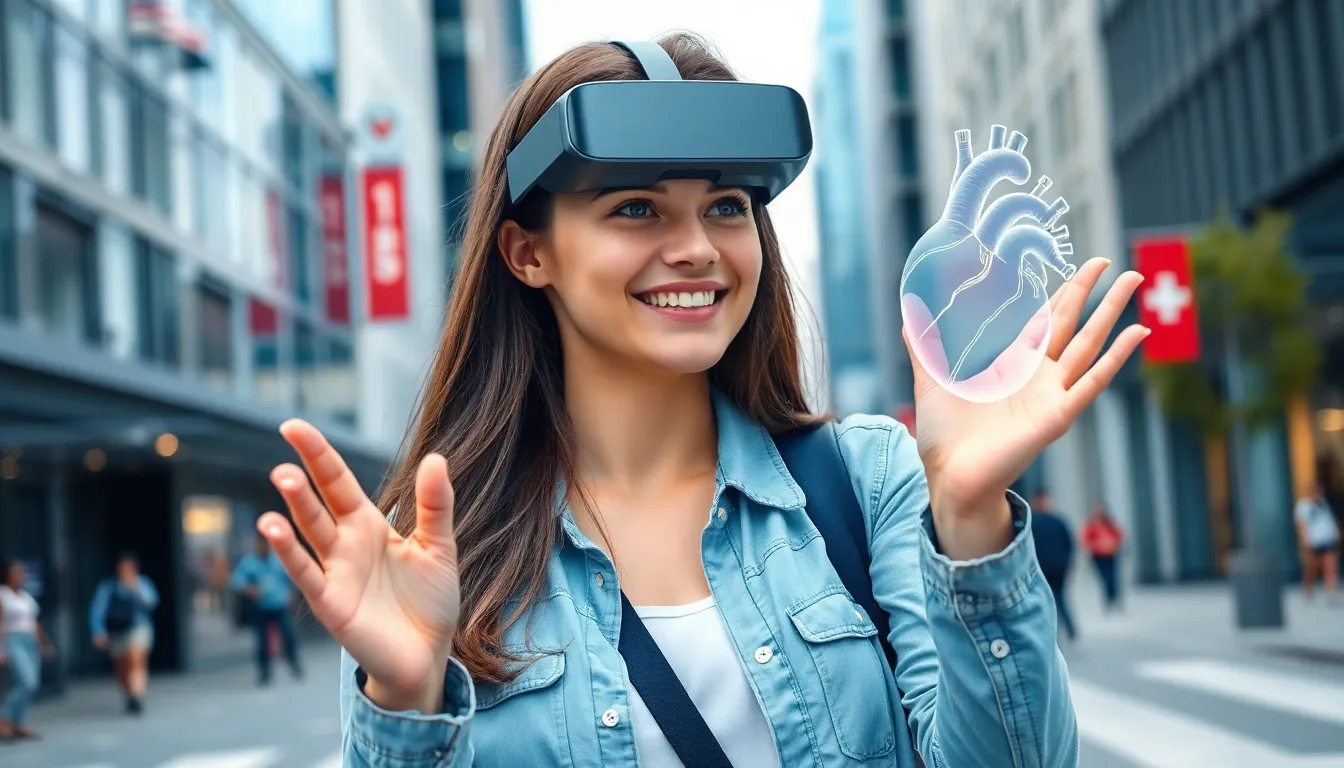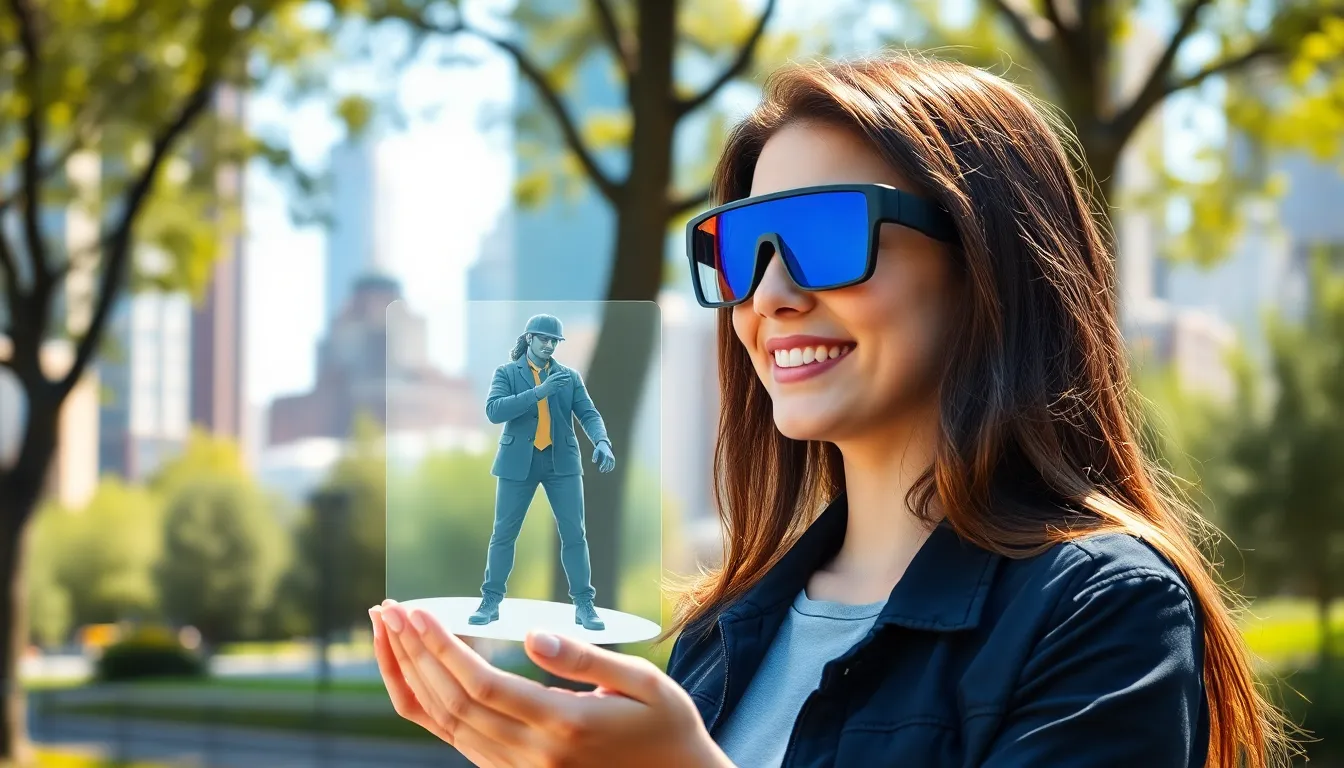Imagine walking down the street and spotting a dragon perched on a park bench, or perhaps a friendly alien waving at you from a coffee shop window. Welcome to the whimsical world of mobile augmented reality (AR), where the mundane meets the magical right through your smartphone. This technology isn’t just for gamers; it’s transforming how people interact with their environment, making everyday experiences a little more extraordinary.
Table of Contents
ToggleOverview of Mobile AR
Mobile augmented reality (AR) enhances real-world environments through digital content. This technology integrates virtual elements into everyday experiences, transforming how individuals interact with their surroundings. For example, applications like Pokémon GO allow users to find digital creatures in real locations.
Mobile AR relies on devices like smartphones and tablets, making it widely accessible. These handheld devices use cameras, sensors, and processors to overlay graphics and information onto the user’s view. Companies such as Apple and Google continuously improve AR capabilities, allowing more immersive experiences.
Applications extend beyond gaming into sectors like education, retail, and health care. In education, AR can visualize complex concepts, enabling students to engage interactively. Retailers use AR to let customers virtually try on products or visualize furniture in their homes. Health care professionals rely on AR for training and real-time information during procedures.
Statistics show a significant rise in mobile AR adoption. According to a report from Statista, the global AR market is projected to reach $198 billion by 2025. This growth can be attributed to advancements in technology and increasing demand for innovative applications.
Mobile AR creates opportunities for businesses and users alike. It not only enhances entertainment but also improves productivity and decision-making processes. Users increasingly seek experiences that blend entertainment with practicality, driving the evolution of mobile AR applications.
Key Technologies Behind Mobile AR

Mobile augmented reality relies on various technologies that enhance user experiences. These technologies form the foundation of engaging applications in diverse fields.
Augmented Reality SDKs
Augmented Reality Software Development Kits serve as essential tools for developers. They simplify the integration of AR technologies into applications. Popular SDKs include ARCore, developed by Google, and ARKit, created by Apple. These platforms offer developers rich libraries for object recognition and tracking. They enable the creation of immersive experiences seamlessly. Through these SDKs, businesses can deliver tailored AR solutions quickly and effectively. Developers benefit from robust documentation and community support, fostering innovation in mobile AR applications.
Sensor Integration
Sensor integration plays a crucial role in creating accurate augmented reality experiences. Devices utilize GPS, accelerometers, and gyroscopes to determine real-world context. GPS provides location data, ensuring that digital content aligns with physical surroundings. Accelerometers detect device movement, enhancing the responsiveness of AR interactions. Gyroscopes enable precise orientation tracking, crucial for realistic overlay of digital elements. Together, these sensors contribute to a cohesive user experience. As technology advances, sensor accuracy improves, leading to more immersive mobile AR applications.
Popular Mobile AR Applications
Mobile AR applications revolutionize user experiences across various domains. They blend digital content with the physical world, providing engaging interactions.
Gaming and Entertainment
Pokémon GO leads the pack, allowing players to explore real-world environments while capturing virtual creatures. Other popular games like Harry Potter: Wizards Unite add immersive storytelling, enhancing social experiences. Moreover, platforms such as Snapchat feature AR filters, enabling users to interact creatively with content. These applications leverage GPS and camera capabilities, creating unique gameplay that connects users to their surroundings. Entertainment apps are not limited to games; interactive cinematic experiences like The Walking Dead: Our World combine storytelling with AR elements, enriching viewer engagement.
Education and Training
Augmented reality finds substantial application in education, offering interactive learning opportunities. Apps such as Google Expeditions allow students to embark on virtual field trips, exploring distant locations from classrooms. Furthermore, platforms like zSpace provide 3D interactive lessons, making complex subjects like biology and physics more tangible. AR also optimizes training in professional fields, particularly healthcare. Applications enable medical students to visualize anatomy through 3D models, enhancing understanding of complex procedures. These educational tools engage learners and promote retention of information, making AR a game changer in training and education.
Benefits of Mobile AR
Mobile AR provides various advantages across multiple sectors, enhancing user interactions and experiences. This technology increases engagement by integrating digital content seamlessly into the real world. Retail, for example, benefits significantly as customers can visualize products in their environments before making a purchase.
Educational settings also experience a transformation through mobile AR. Students grasp complex subjects more easily with interactive visualizations and simulations, enhancing overall comprehension and retention. Health care professionals utilize mobile AR for training, allowing for real-time visualization of procedures, which improves learning outcomes and patient care.
The entertainment industry reaps substantial rewards from mobile AR as well. Players engage more deeply with games like Pokémon GO, which merge gaming with real-world exploration, fostering social interactions. Users find mobile AR applications on platforms like Snapchat to be not only fun but also enhance creativity with immersive filters.
According to reports, the mobile AR market is projected to reach $198 billion by 2025, a clear indication of its growing importance. Businesses adopting mobile AR see improved productivity and decision-making processes, as digital overlays assist with information while users navigate physical spaces.
Moreover, mobile AR encourages innovation, prompting developers to create diverse applications that meet the evolving demands of users. Accessibility is another key feature; mobile AR operates on widely available devices such as smartphones and tablets, making it easy for users to experience augmented reality without specialized equipment. As this technology advances, it promises even more transformative benefits across various fields.
Challenges and Limitations
Mobile AR faces several challenges and limitations that affect its broader adoption and effectiveness. One significant challenge involves technical constraints. Devices equipped with less powerful processors or outdated sensors may struggle to deliver seamless augmented experiences. Consequently, users might experience lag or glitches, undermining user satisfaction.
User interface design presents another hurdle. Complex navigation and interactions can deter users from engaging with AR applications. Simplifying these interfaces is crucial for enhancing accessibility and user experience. Yet, ensuring intuitive designs while providing rich, interactive content poses a balancing act for developers.
Data privacy also remains a critical concern. Users must often share personal data, like location information, to unlock AR features. Issues surrounding data security may prevent users from fully embracing mobile AR, as they prioritize privacy over convenience.
Another limitation arises from varying hardware compatibility. Not all smartphones support advanced AR functionalities, leading to inconsistencies in user experiences. Fragmentation across device models turns into a barrier, as developers must optimize applications for diverse hardware specifications.
Furthermore, environmental factors can impact the effectiveness of mobile AR. Poor lighting conditions or obstructed views may hinder the accurate overlay of digital content onto the real world. Users often require specific environments to benefit fully from AR experiences, which might not always be available.
Finally, continuous technological advancements drive expectations. People expect quick innovations and enhancements in mobile AR, creating pressure on developers to keep pace. Meeting these escalating expectations necessitates ongoing investment in research and development.
Mobile AR is reshaping how individuals interact with their environments and each other. Its versatility spans numerous sectors from education to healthcare and retail, providing innovative solutions that enhance user experiences. As technology continues to evolve, the potential for mobile AR applications will only expand, driving engagement and creativity.
Despite facing challenges like technical limitations and privacy concerns, the future of mobile AR looks promising. With ongoing advancements and a growing market, it’s clear that mobile AR will play a pivotal role in shaping the way people perceive and interact with the world around them. Embracing this technology could unlock new opportunities for businesses and users alike.






